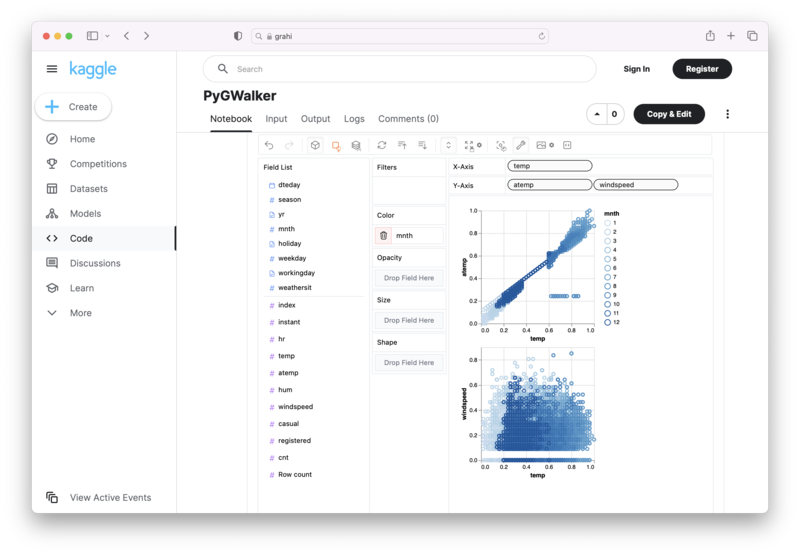Resolving 'No Module Named in Pandas' Error: A Comprehensive Guide
Updated on
As Python data analysts and data scientists, we sometimes face a common but vexing issue, the infamous "No module named Pandas" error. In this article, we'll systematically dissect this problem, analyze its root causes, and present solutions with detailed, easy-to-understand code examples.
Want to quickly create Data Visualizations in Python?
PyGWalker is an Open Source Python Project that can help speed up the data analysis and visualization workflow directly within a Jupyter Notebook-based environments.
PyGWalker (opens in a new tab) turns your Pandas Dataframe (or Polars Dataframe) into a visual UI where you can drag and drop variables to create graphs with ease. Simply use the following code:
pip install pygwalker
import pygwalker as pyg
gwalker = pyg.walk(df)You can run PyGWalker right now with these online notebooks:
And, don't forget to give us a ⭐️ on GitHub!
Understanding Why 'No Module Named in Pandas' Error Occurs
This error manifests when the active Python environment is unable to locate the Pandas library, for several possible reasons:
- Pandas library is not installed
- Python is unable to locate the installed Pandas library
- Incompatibility between Python and Pandas versions
- Pandas library is not included in your global path
- Pandas is not installed in your active virtual environment
Let's take a more in-depth look at each of these possibilities and how to resolve them.
Verifying the Installation of Pandas
The first checkpoint is to ensure the Pandas library is installed in your environment. Use the package manager pip to check this:
pip show pandasIf this command returns a version number and other information about Pandas, it signifies that the library is installed. However, if it doesn't, it's time to install Pandas:
pip install pandasThis command will initiate the installation of the latest version of the Pandas library.
Checking Python-Pandas Compatibility
Different versions of Python may or may not be compatible with the installed version of Pandas. For instance, if you're running Python 2.7 and your Pandas library is designed for Python 3.x, issues will arise. In such cases, either install an older version of Pandas compatible with your Python version:
pip install pandas==x.xx.xOr consider upgrading your Python environment to the latest version to ensure compatibility with the latest Pandas library.
Using Anaconda Distribution
Anaconda is an excellent tool for data science as it bundles numerous libraries including Pandas and provides a unified Python environment. If you're continually facing issues with module dependencies, Anaconda can be your savior.
After installing Anaconda, you can verify the installation of Pandas using:
conda list pandasEnsuring Correct Environment Path
Sometimes Python can't locate the Pandas library because it's not included in the global path. To include Pandas in your path, add the location of the Pandas library to the Python PATH environment variable.
Working with Virtual Environments
Python's virtual environments are isolated sandboxes that provide a specific set of libraries and Python versions. If you're using a virtual environment, you must install Pandas within it:
pip install pandasTo verify the installation, use:
pip show pandasAnd remember, this installation is specific to the active virtual environment only!
Starting from Scratch
When all else fails, it might be best to start from scratch. Uninstall the Python-related files you've installed, and go for the Anaconda distribution. It equips you with a fresh environment and all the necessary tools, including Pandas.
Pandas is a versatile and robust library for Python, and encountering the "No module named Pandas" error shouldn't hamper your data analysis journey. With this comprehensive guide and these detailed steps, you're now fully equipped to tackle this error and get back to analyzing your data.


